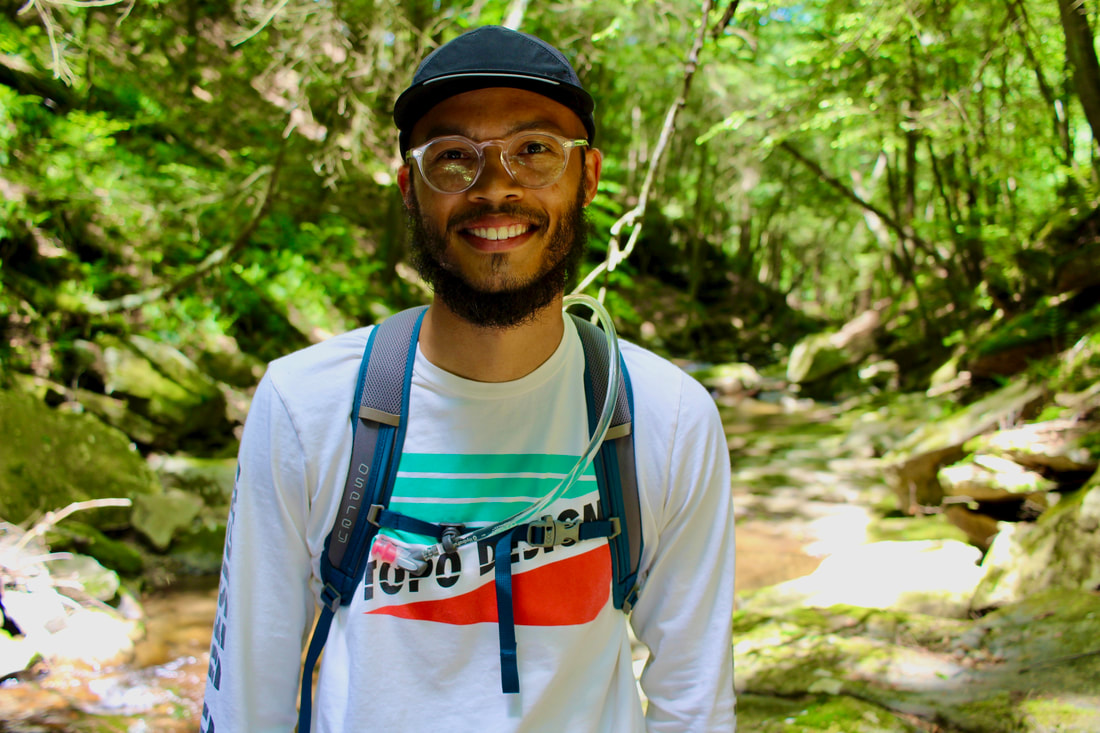To me, ecohydrology is a framework for examining feedbacks between ecologic and hydrologic systems. The novelty of ecohydrology is its flexibility across spatial and temporal scales. Whether you’re studying water use efficiency of a single tree during a summer drought or exploring impacts of ecological fragmentation from regional urbanization on hydrologic flows, you’re likely employing principles of ecohydrology.
Ecohydrology also provides a framework for examining how processes at one spatiotemporal scale impact processes at another spatiotemporal scale. For example, when the transpiration response of a single tree during a summer drought is scaled to an entire catchment, the aggregated ecosystem stress may manifest into measurable changes in streamflow response at storm event, seasonal, or annual time steps. System responses, like these, increase in complexity when ecohydrologic feedbacks intersect human systems. At this nexus, we can begin asking questions about management or policy interventions as a means for mitigating land cover or climate change impacts on ecohydrologic systems. Exploring this nexus could be vital for many ecosystem services including reliable drinking water supplies.
What are your undergraduate and graduate degrees in?
I received a Bachelors in Environmental Sciences and a Masters in Geography from the University of North Carolina at Chapel Hill. I’m currently finishing my PhD in Environmental Sciences at the University of Virginia with a focus in hydrology.
How did you arrive at working in/thinking about ecohydrology?
As a child, I thought I would grow up to save the Amazon Rainforest. As it turns out, that’s no easy feat, so I did the next best thing and became an ecohydrologist. Unfortunately, you couldn’t major in ecohydrology or even hydrology at my university, so I figured environmental sciences and marine sciences were close enough. After courses in coastal ecology and oceanography, I quickly learned that there were two water worlds – the saltwater one and the freshwater one. It wasn’t until my third and fourth years of undergrad that I took my first watershed hydrology course and started working in an ecohydrology lab. It was these early experiences that taught me two important lessons: 1) I could study both rain and forests; and 2) I was very wrong about the two water worlds.
Working in an ecohydrology lab in graduate school took me to the mountains of North Carolina to collect monthly samples at the Coweeta Hydrologic Laboratory. Our early efforts to characterize spatiotemporal soil moisture and groundwater dynamics led to papers on quickflow response and streamflow recession characteristics. In 2016, the area around the Coweeta Hydrologic Laboratory – known to be one of the wettest places on the US East Coast – caught fire. A record-breaking rainless period in an otherwise average year led to early leaf senescence, tree mortality, and intense fires. Rainfall variability is predicted to intensify across the region creating conditions suitable for worsening ecosystem stress and mortality. If correct, these projections could reshape our understanding of ecology and hydrology at Coweeta and in many other well-studied systems. Since 2016, I’ve shifted to focus my research on understanding how discrepancies in drought response across species in biodiverse forests scale to impact streamflow dynamics across entire catchments.
What do you see as an important emerging area of ecohydrology?
Drawing connections across scales and sites is a theme in ecohydrology, and recently, I’m finding more research emerging on how plant physiology and drought response impact short- and long-term streamflow dynamics. One question that has been posed, is whether trees ‘remember’ drought, and if so, how this impacts hydrology? Integration of physiology and drought response into ecohydrologic models is in its nascence, but could be vital for understanding future impacts of precipitation variability on streamflow generation. Feedbacks between these tree-level responses and landscape hydrologic patterns could also impact how we manage forests, and potentially forest fires, for water resources.
Do you have a favorite ecohydrology paper? Describe/explain.
One of my favorite papers is Jim Dooge’s 1986 manifesto, “Looking for Hydrologic Laws”. In this paper, Dooge outlined the need for hydrologic theories that relate landscape properties to hydrologic response across watershed scales. He challenged the field to look past heterogeneity towards a framework for prediction in ungaged basins. To date, many hydrologists and ecohydrologists invoke his work when synthesizing their research more broadly. For me, this paper is a reminder that the value of my research is not in showing that my watersheds are simply unique, but instead contextualizing and quantifying why and how they vary from other watersheds across the globe.
What do you do for fun (apart from ecohydrology)?
When I’m not in the field or behind a computer, I’m usually getting lost in nature. I love hiking, but I love running more, so most weekends you’ll find me killing two birds with one stone by trail-running. Shenandoah National Park was my weekend home in Charlottesville, Virginia, but since I’ve relocated to Washington, DC for my science policy fellowship I’ve struggled getting out of the city. If anyone has great trail-running or hiking spots nearby, let me know!

 RSS Feed
RSS Feed